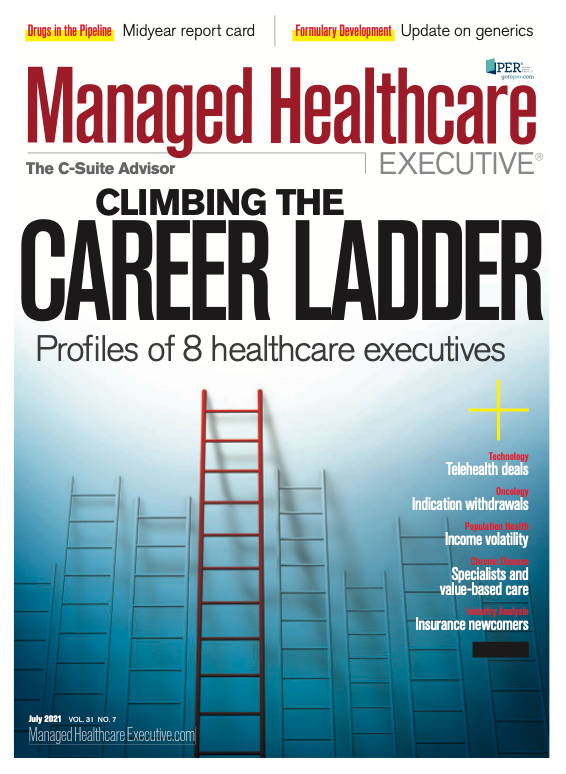Angela Celestin, CareFirst BlueCross BlueShield: Changing to Healthcare Because of Change in Healthcare
Angela Celestin, executive vice president and chief human resources officer for CareFirst BlueCross BlueShield, had a career outside of healthcare before working at CareFirst. “Healthcare was going through some major changes, and I wanted to be part of that change,” she says.
Climbing the Career Ladder: Third of 10 profiles of healthcare executives and their careers.
Angela Celestin proves you don’t have to come up through the healthcare industry to be successful in the field. The skills learned in other industries can be transferable for those ready to make the switch to healthcare.
Celestin, who is now executive vice president and chief human resources officer for CareFirst BlueCross BlueShield, based in Baltimore and Washington, D.C., had HR roles in the food and beverage, publishing and financial services industries before making the jump to the health insurer two years ago.
Moving from industry to industry, Celestin has seen that “people are people. Employees are employees.”
The New York native grew up in public housing in Brooklyn and went to Cornell University, where she planned to be a lawyer. But PepsiCo recruited her for a minority internship program during her sophomore year of college. “That began my career in HR,” says Celestin.
She graduated with a degree in industrial and labor relations and joined PepsiCo full time. The food and beverage giant “gave young people a lot of responsibility at a very early age,” says Celestin, who was involved in contract negotiations and ran training courses on topics such as sexual harassment and workforce discrimination. PepsiCo embraced the need for employee diversity and even in the early 1990s, the company “had diverse hiring goals way before that was a thing,” Celestin says. Her career with PepsiCo took her to small towns in the Midwest, and that continued when she took an HR job with the printing company, R.R. Donnelley & Sons. Those experiences outside the big city “really grew me as a person,” she says. One of her responsibilities at R.R. Donnelly was leading diversity training courses for the company, which had few minority employees at the time.
Her next move was into financial services, working in HR executive roles for Citibank in Chicago and New York. She then moved to OneMain Financial and Money Mart Financial Services, where she served as executive vice president and chief human resources officer.
Celestin says she was attracted to CareFirst because she knew “healthcare was going through some major changes, and I wanted to be part of that change.” From her work in the financial services industry, she often dealt with customers “in their time of need. I saw a correlation” between finance and healthcare, she says. Celestin also sees similarities in dealing with consumers in healthcare and at companies such as Money Mart, where disparities exist. “Healthcare is still inequitable for many Americans. The type of healthcare you receive depends on where you grew up, your neighborhood, your race.”
One big difference between financial services and healthcare was that “the lack of embrace of technology (in healthcare) was surprising to me. Technology has changed banking so much,” Celestin says.
With technology in banking “the focus is on the customer. The focus is on the ease of the transaction.” Healthcare, on the other hand, has been slow to “meet customers where they are,” Celestin says.
But she sees that changing because of the COVID-19 pandemic, as healthcare organizations and consumers made an abrupt shift to virtual care.
As the pandemic has fueled the adoption of telehealth, Celestin hopes it will help “make healthcare accessible to all.”

Conversations With Perry and Friends: Paul Fronstin, Ph.D.
May 9th 2025Perry Cohen, Pharm.D., a longtime member of the Managed Healthcare Executive editorial advisory board, is host of the Conversations with Perry and Friends podcast. In this episode, his guest is Paul Fronstin, Ph.D., director of health benefits research at the Employee Benefit Research Institute.
Listen
Conversations With Perry and Friends
April 14th 2025Perry Cohen, Pharm.D., a longtime member of the Managed Healthcare Executive editorial advisory board, is host of the Conversations with Perry and Friends podcast. His guest this episode is John Baackes, the former CEO of L.A. Care Health Plan.
Listen